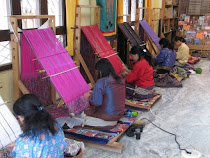History of bhutanese textile
Bhutanese textiles represents a rich and complex repository of a unique art of form. They are recognised for their abdundance of colour, sophistication and variation of patterns , and the intricate dyeing and weaving techniques. The weavers, who are mostly women, must not be seen merely as creator of wealth but also as an innovators and owners of artistic skills. Developed and over nutured over centuries of time.
History
The history of bhutanese textiles became more evidence in the last century. As textile production moved beyond the confines of clothing to artistic expression of individuals and communities patronage from the royal house hold was virtual . Although the founders of the wangchuck dynasty are from bumthang, their ancestral home is in lhuntse district which was historically recognised as the home of the most celebrated weavers in the country.
Women weavers
Ordinary weavers produced fabrics for general use that were of standard quality.
The farmers, wove only when they were free from agricultural work. It was the royal weavers, tharma in the royal loom hovies who were the profession. Some of the aristocrate and landed household also professional weavers. The all-ecompassing use of textile took it beyond the realm of clothing to the realms of rituals and symbolism, as a form of wealth and commodies for trade and taxation. A well-established system of production, use and exchange linked the communities, extended the threads of inderderdependence, and wove the very fabrics of Bhutanese society.




Comments
Post a Comment